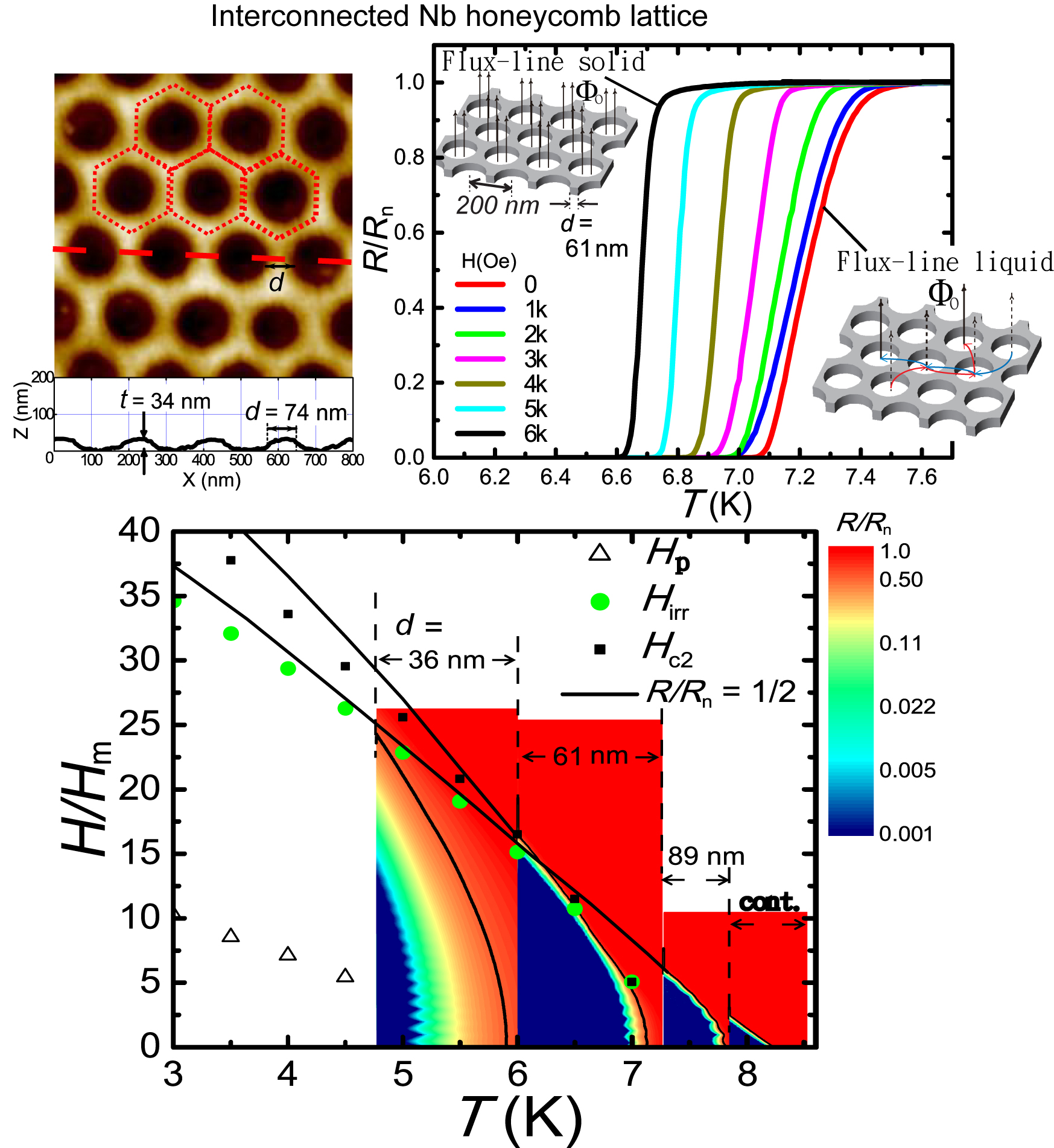Enhanced superconducting phase fluctuation via artificial nanostructure engineering
In a conventional superconductor, a large Cooper pair density gives rise to a extremely stiff phase rigidity, thus obscuring the rich phenomena associated with phase fluctuations. In a recent work led by Dr. Wei-Li Lee’s team, the phase rigidity in superconducting niobium (Nb) films can be effectively reduced by imposing well-ordered anti-dots, forming a interconnected Nb honeycomb lattice (INHL). By using a special technique we developed previously, the first author, Ms. Ting-Hui Chen, succeeded in fabricating a remarkable series of INHLs with sub-100nm nanostructures extending over 10^8 cells and up to few millimeters in size, where an unusual superconducting transition width narrowing in fields was observed for the first time in superconducting systems. The broadened transition width in zero field is a direct consequence of the enhanced phase fluctuations due to the intriguing interplay between the phase slips and flux-line lattice. Our works demonstrate the feasibility of reducing the phase rigidity in a superconductor via artificial nanostructure engineering. The complete results have been published in the Physical Review B Rapid Communications (Phys. Rev. B 96, 020506 (R)(2017))
